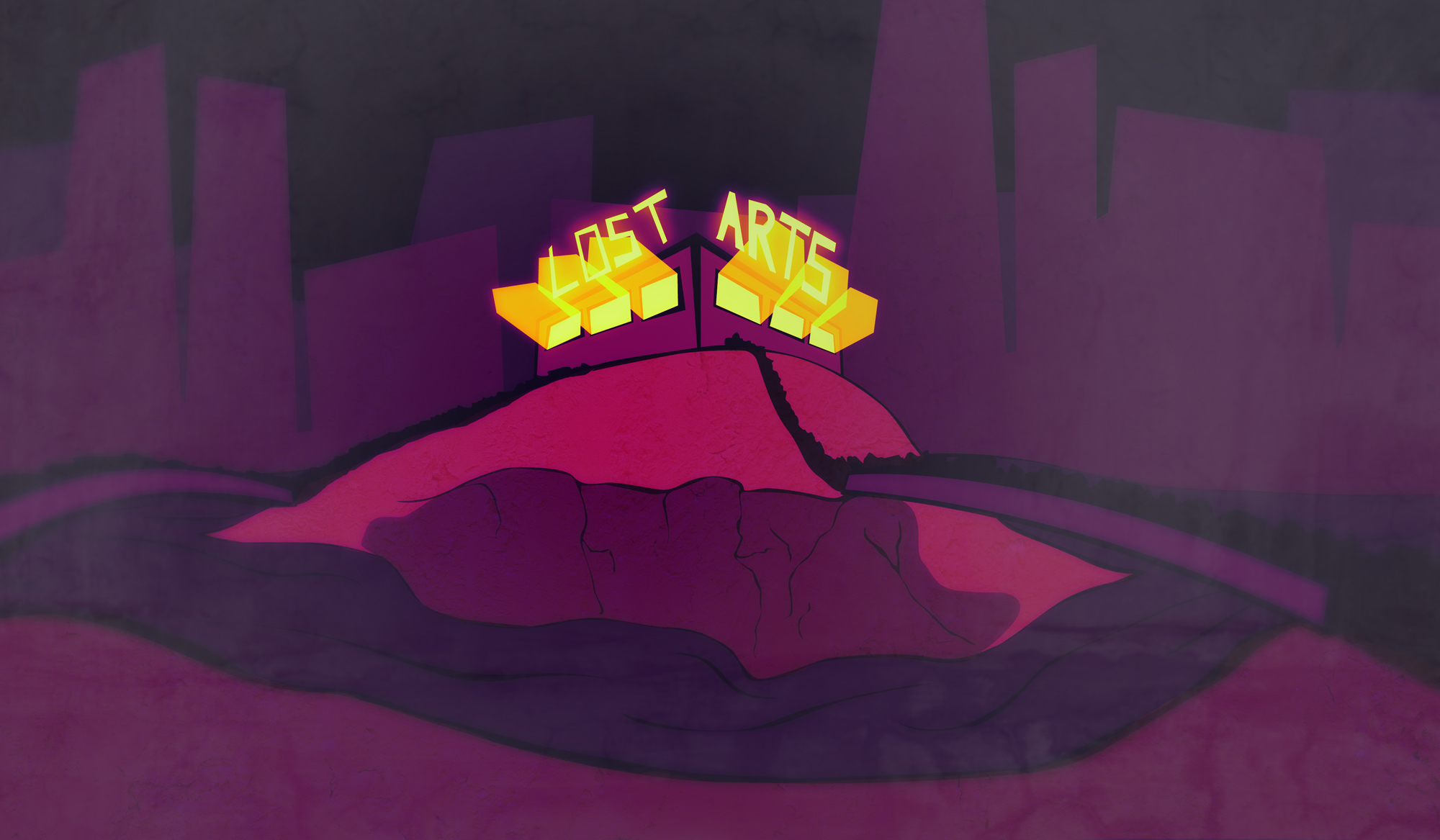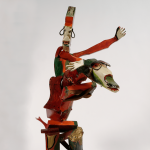
Illustration by Zach Cooper.
It’s hard to build furniture in a snowstorm. Just ask Charles Adler — co-founder of Kickstarter, self-proclaimed “lifelong nomad,” and engineering school dropout — who found himself in that situation 15 years ago.
“I was in my father-in-law’s backyard in Skokie in the wintertime,” Adler said. “I was wearing a puffy jacket, trying to build a table for my turntable out there. It was a disaster.” Adler realized then that for many former students who make tangible objects, having a space and tools to produce work is next to impossible — and forget about luxury hours of pure studio experimentation.
Enter Lost Arts, a 10,000 square foot workspace in a pleasantly grimy storage warehouse in Chicago’s Goose Island neighborhood. Adler has designed the sprawling space for the space-deprived “ambitious creative,” who can now hang her puffy jacket at the door, hang around like-minded artists, and get to work.
The concept of artists and artisans having access to a shared space dedicated to experimentation and production isn’t new. Thomas Edison’s “Invention Factory” in Menlo Park is one of the many historical examples. Edison knew, long before the maker movement, that innovators with a room of their own will frequently turn out cool stuff.
So-called “makerspaces” like AlphaLabs in Brooklyn and Double Union in San Francisco provide the space and tools (band saws, sewing machines, laser cutters, motherboards, etc.) for membership and/or rent. Though Lost Arts has a number of MakerBots for use, Adler said that the space is less about 3D-rent-a-printers and more about the cross-pollination of ideas between people.
“I see Lost Arts as this strange territory between the definitions of a makerspace, incubator or residency, and creative co-working space,” he said. “Ultimately, [the mission of] Lost Arts boils down to supporting ambitious creatives across a multitude of disciplines. We’re aiming to push their ideas further in a communal environment that’s raw, open and unabashedly creative.”
Katherine Darnstadt is an architect and urban designer, and founder of Latent Design in the West Loop. She’s also an enthusiastic member of Lost Arts.
“Lost Arts is an opportunity for continued evolution of a work style that is cultivated during design school,” she said. “However, not all are fortunate to work in an environment that supports that. As a small firm owner, I may have access to the peer network, but not access to the equipment and expertise available at Lost Arts.”
Darnstadt said that the community and the ability to make prototypes has added huge value to her process.
Adler described many creative people using the internet today as “accidental entrepreneurs”: people who make things, then get visibility via Instagram or other social media networks. Before long, the dedicated few who find their audience may decide to go into business; the observers of their social media accounts become their consumers — as long as the makers can literally produce the goods to sell. Adler hopes Lost Arts can help those “accidental entrepreneurs” as they are building a business or exploring personal projects with continual opportunities to learn from each other and share knowledge in a civic space.
The space at 909 W. Bliss Street is actually the second phase of Lost Arts. A “pop-up” version, known as the Center for Lost Arts, was “the proof of concept stage,” as Adler put it. This first space, less than half the size of the current one, saw between 40 and 60 artists over the month it was in operation.
Ted Burdett is a “designer and maker of things,” as he put it. He and his wife, Sharon, own and operate Strand Design; the couple was involved with the first incarnation of Lost Arts and are members of the current one. The Burdetts had their own three-story workshop for six years, but when the building was sold they chose to outsource much of their manufacturing.
“The change has been good,” said Ted Burdett. “But that doesn’t address the design process at all; the formulation of concepts and active evolution of ideas into product. For that, we need to prototype. We need to make ideas into objects that can be tested. These experiments are essential to successfully developing a product.”
That’s where Lost Arts comes in. “Not only can we use the assets of the space to make,” he said, “we can engage with the community there to grow ideas through mutual inspiration and critical discourse.”
Adler said designers Dan Cigler and Travis Koss exemplified the Lost Arts ideal. After a successful Kickstarter campaign, they created the popular Beton Coffee Storage Vessel using resources provided to them by Lost Arts the whole way through.
“The 3-D printers, the table saws — they used the entire space,” Adler said. “This is the whole point: To facilitate creation that may not even know what it needs until the creators have the opportunity to figure it out.”
The “free” in Lost Arts’ identity as a “free creative space” means freedom, not “no charge.” A creator must apply to be a member of the community and, if accepted, has three levels of membership opportunity: $80 will get you a month of weekend time; a “nights and weekends” plan goes for $200 per month; and for $500 a month, the space is yours during all business hours (Tuesday through Sunday, 10 a.m. to 10 p.m.)
The application process is in place less to exclude than to facilitate harmony for Adler’s learn/teach model. A membership vetting model, Adler feels, is helpful in creating a diversity of knowledge and avoiding “silos.”
“You can’t architect a community, but you can seed one,” Adler said. “We ask people who apply, ‘What do you want to make? learn? share?’ It’s about intent, here, and it’s important that members have something they can give back even as they learn themselves.”
Recent School of the Art Institute of Chicago (SAIC) graduates who now find themselves without a cutting table or silkscreening supplies may be interested customers.
“Anybody who just wants to build a project should head over and build it,” says Burdett. “Anybody who wants to start a business should head over and talk to members about it. If you wanna make some art in the company of wonderfully creative people, head over.”
“Lost Arts strives to be welcoming and supportive,” said Adler. “We have hosts who are responsible for greeting folks at the door and giving them a tour of the space if they’re interested.”
The hosts are also there for safety and to keep the place tidy. There are official mentors in the space who keep facilities in working order, run orientation and safety classes, and support members through their projects as necessary. This last, said Adler, is the mentors’ most important role.
There is space at Lost Arts for events and lectures; SAIC itself has been in discussion with Adler about satellite class opportunities. Keep up with Lost Arts via Twitter, register for their newsletter on their website, and follow them on Facebook.





















